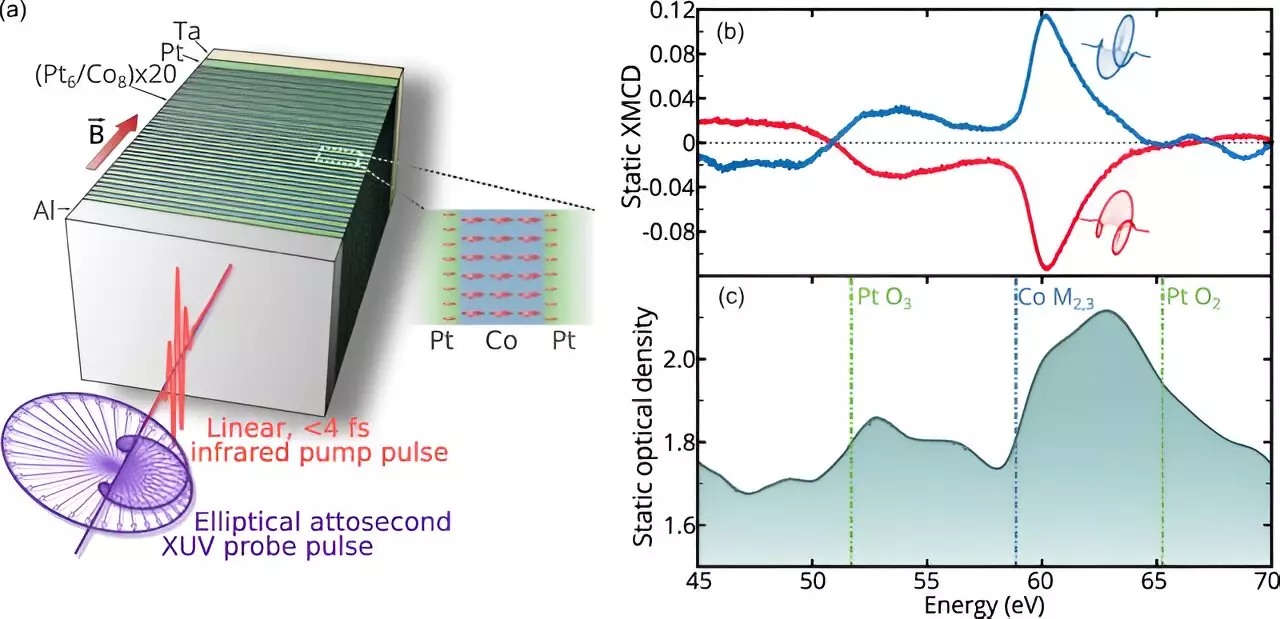The field of condensed matter physics has taken a significant leap forward with the discovery that ultrashort laser pulses can directly generate spin currents. A recent study published in the journal Physical Review Letters showcases the innovative work of an international team of physicists who have demonstrated a novel method for creating electron spin currents. This breakthrough could revolutionize our approach to electronic device design, leading to faster and more energy-efficient technologies.
Spin currents refer to the flow of electrons that are organized according to their spin orientation, which can be likened to how the blades of a fan align when spun. The core idea is to exploit the intrinsic angular momentum of electrons, a property that can enhance the speed and efficiency of electronic devices. Traditional methods for generating spin currents involved indirectly using lasers to initiate electron spin, but these methods often fell short due to the production of mixed spin orientations. The inefficiency necessitated subsequent filtering steps, complicating the overall process.
However, the new approach outlined by the research team eliminates this hurdle by enabling the direct creation of spin currents with aligned spins. This not only simplifies the process but also opens avenues for practical applications that could harness the full potential of spintronics.
To achieve their findings, the researchers constructed a specialized target composed of 20 alternating layers of platinum and cobalt, each only a nanometer thick. This intricate structure was crucial, as the thin layers allowed for greater control over magnetic interactions and spin alignment. The experimental setup involved placing this structure within a controlled environment and applying a strong magnetic field that was directed perpendicularly to the layers. This strategic alignment was key in synchronizing the spins of the electrons within the layered materials.
After establishing the magnetic field, the researchers employed a combination of linear and circularly polarized laser pulses. The linear pulse initiated the spin alignment, while the subsequent circular laser probe pulse triggered a shift in the electron spins between the layers, occurring within a time frame of just a few femtoseconds—a remarkable feat that outpaces older techniques by a significant margin.
The implications of this research are profound. By establishing a method for generating spin currents directly, the potential for developing faster and more energy-efficient electronic devices becomes increasingly tangible. As the demand for high-performance electronics continues to surge, integrating spintronic principles may lead to breakthroughs in storage devices, sensors, and processors. Moreover, the researchers conducted theoretical calculations that aligned closely with their experimental observations, reinforcing the viability of their approach.
This groundbreaking study sheds light on the sophisticated interplay between magnetic fields and laser technology for the generation of spin currents. With the ability to directly manipulate electron spins, the scientific community stands at the frontier of new discoveries that could radically transform electronics. This research not only demonstrates the potential of ultrashort laser pulses but also paves the way for future innovations in the field of spintronics, marking a significant chapter in the evolution of electronic devices.


Leave a Reply